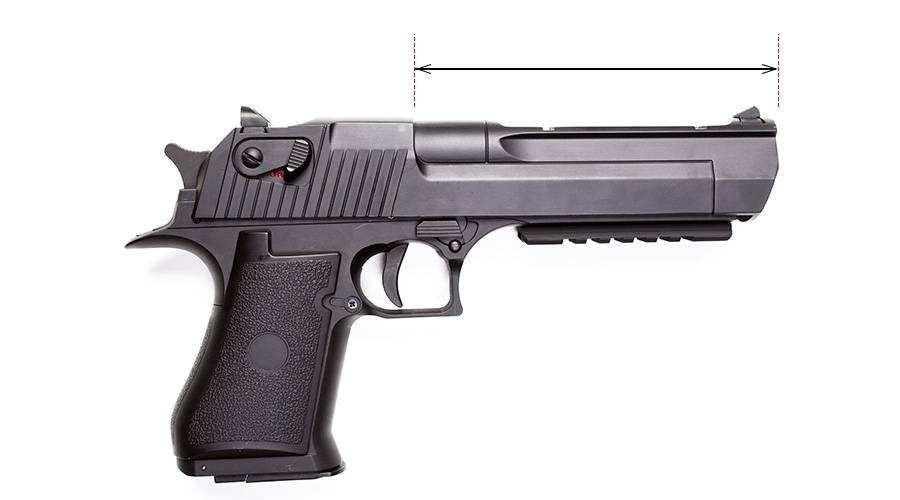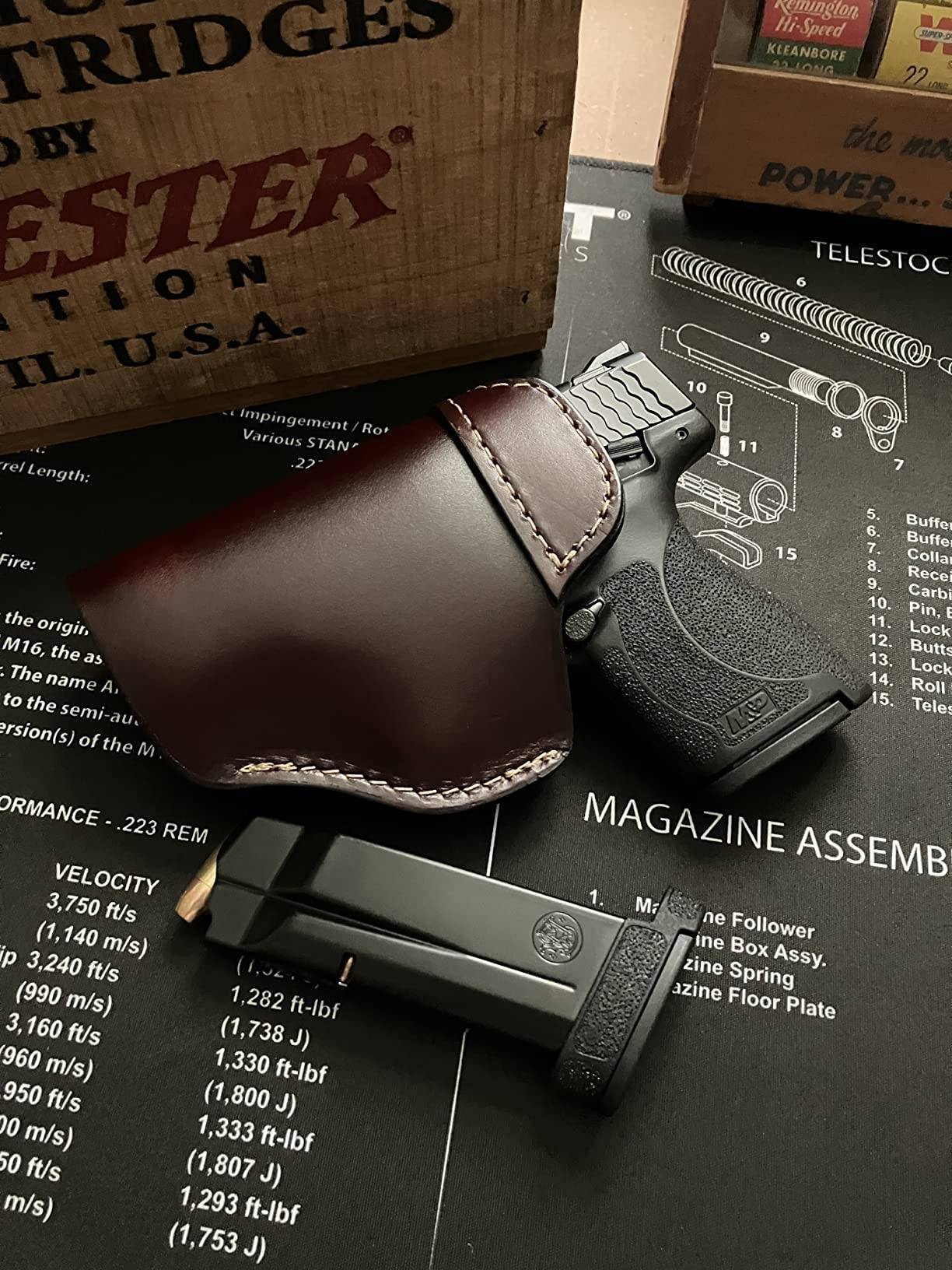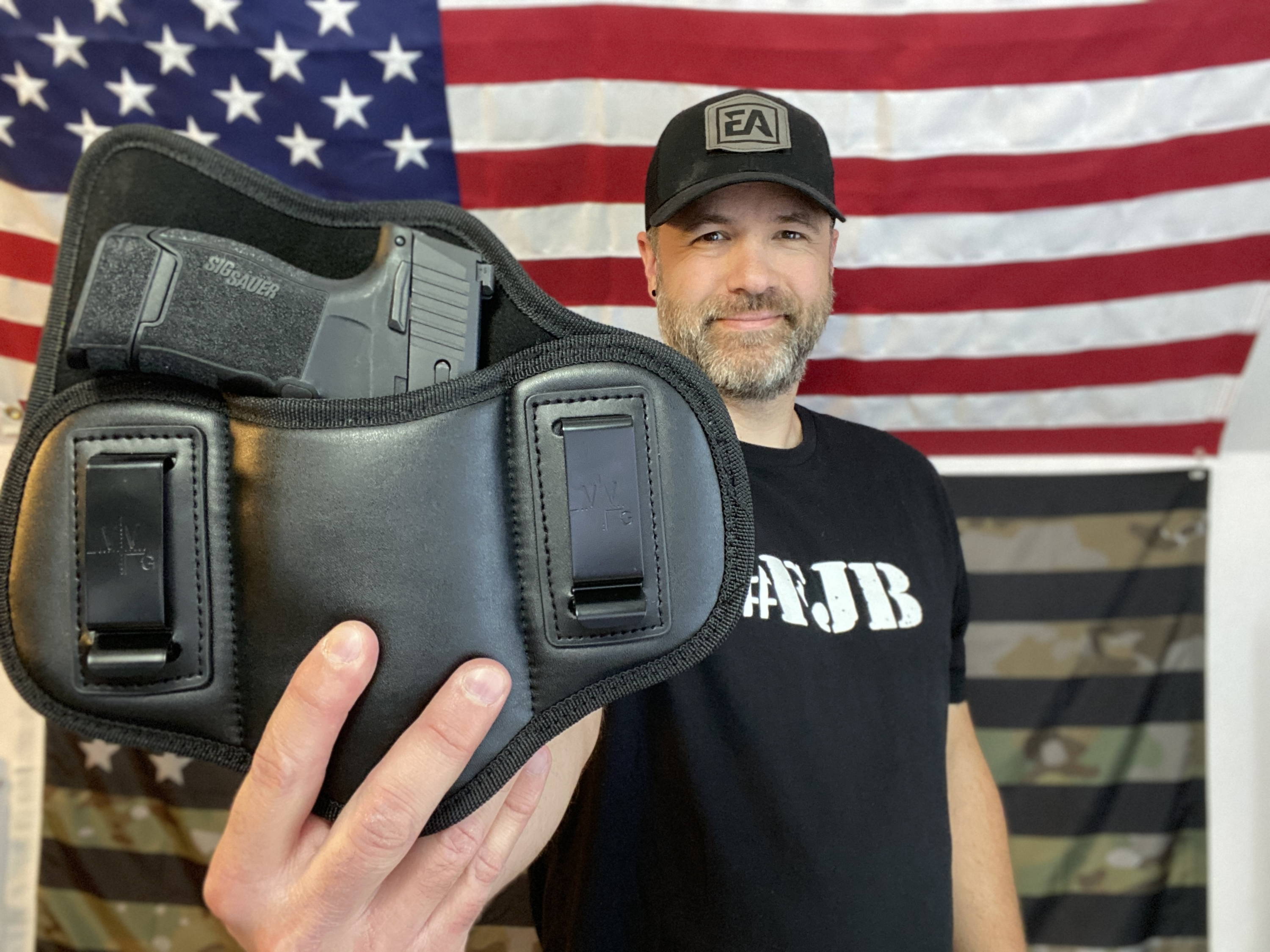Barrel measurement is an essential aspect of firearm ownership and usage. It refers to the process of measuring the length of a gun barrel from the breech face to the muzzle. Accurate barrel measurement is crucial because it affects factors such as accuracy, velocity, and recoil, among others. Understanding how to measure the barrel of a firearm accurately is essential for any gun enthusiast, shooter, or hunter.

In this blog post, we will discuss the importance of accurate barrel measurement, the different tools required for measuring barrel length, and the process of measuring barrel length for different types of firearms. Additionally, we will look at factors that affect barrel measurement, such as muzzle devices, and provide tips for achieving precise measurements.
By the end of this post, you will have a better understanding of barrel measurement and its importance in ensuring that your firearm operates optimally.
Table Of Contents
I. Barrel Length Definition:
The barrel length of a firearm is the distance between the breech and the muzzle, excluding any attachments such as muzzle brakes or suppressors. It is typically measured in inches or millimeters and can have a significant impact on a weapon's performance. Accurate barrel length measurement is crucial for determining the weapon's accuracy, velocity, and overall handling.
Barrel length measurement can also impact a firearm's legal status, as certain jurisdictions have restrictions on the length of the barrel. It is essential to follow local laws and regulations when modifying or purchasing a firearm.
To measure barrel length accurately, it is important to start from the breech face and exclude any attachments from the measurement. The use of calipers or a precision ruler is recommended for precise measurements. Additionally, it is essential to make multiple measurements to ensure accuracy and record the average measurement.
Proper barrel length measurement is important for gun enthusiasts, hunters, and competitive shooters alike. Understanding the definition of barrel length and how to measure it accurately is essential to maintain firearm safety, performance, and legal compliance.
II. Why Barrel Measurement Is Important?
Barrel measurement is a crucial aspect of firearms that can impact a gun's accuracy, velocity, firearms dimensions, sight radius, effective range, and most significantly, concealability and overall performance. The length of a firearm's barrel plays a significant role in determining the projectile's speed and accuracy as it travels down the barrel. The longer the barrel, the more time the bullet spends in contact with the rifling, resulting in greater accuracy and velocity. Conversely, shorter barrels may be more maneuverable and easier to handle, but they may also sacrifice some accuracy and velocity.
Different types of firearms require different barrel lengths for optimal performance. For instance, rifles are typically designed with longer barrels to maximize accuracy and velocity, while handguns may have shorter barrels for improved maneuverability. Shotguns, on the other hand, may have varying barrel lengths depending on the intended use. Hunting shotguns may have longer barrels to increase accuracy, while tactical shotguns may have shorter barrels for increased maneuverability in tight spaces.
Accurately measuring the barrel length of a firearm is crucial to ensure optimal performance and achieve the desired results. The process involves inserting a rod through the breech and out of the muzzle, marking the rod at the point where it exits the muzzle, and measuring the distance between the mark and the end of the rod. Proper measurement techniques and appropriate tools are essential to achieving precise measurements and optimizing firearm performance.
1. How To Measure Rifle Barrel Length
Measuring the barrel length of a rifle is a straightforward process that can be completed with a few simple steps. To begin, ensure that the firearm is unloaded and remove any attachments that may interfere with the measurement process. Next, insert a cleaning rod through the rifle's chamber and out of the muzzle, making sure to keep the rod straight and centered throughout the process. Mark the rod at the point where it exits the muzzle and remove it from the firearm. Measure the distance between the mark and the end of the rod to determine the barrel length accurately.
To achieve precise measurements, it is important to use appropriate tools, such as a cleaning rod or a specialized barrel measuring tool. These tools ensure that the rod stays centered and straight throughout the measurement process, resulting in a more accurate reading.
When measuring a rifle barrel's length, it is important to take the measurement from the end of the chamber to the end of the muzzle, including any permanently attached flash suppressors or muzzle brakes. It is also essential to measure multiple times to ensure accuracy and consistency, as even slight variations in measurement can impact a firearm's performance.

Examples of common rifle barrel lengths include 16 inches, 18 inches, 20 inches, and 24 inches. Longer barrel lengths are typically associated with higher velocities and improved accuracy, while shorter barrel lengths are often favored for their increased maneuverability.
2. How To Measure Shotgun Barrel Length
To determine the barrel length of a shotgun, some different techniques are required than for measuring the barrel length of a rifle.
First, ensure that the shotgun is unloaded and remove any choke tubes. Then, insert a dowel rod into the shotgun's chamber and push it out through the end of the barrel while keeping the rod centered and straight. Once the dowel rod has extended past the end of the barrel, mark it at the muzzle's end and remove it from the shotgun.
To get an accurate measurement of the barrel length, measure the distance between the mark and the end of the dowel rod. It's crucial to use appropriate tools like a dowel rod or a specialized barrel measuring tool for precise measurement. Shotgun barrel length should be measured from the end of the chamber to the end of the barrel, including any permanently attached muzzle devices.
Measuring multiple times is essential to ensure accuracy and consistency, as even slight variations in measurement can impact a shotgun's performance.
Common shotgun barrel lengths are 18.5 inches, 20 inches, and 26 inches, with shorter barrel lengths offering increased maneuverability and longer barrel lengths improving accuracy and reducing recoil.

3. How to measure Revolver Barrel Length
Measuring the barrel length of a revolver can be done using simple tools and is a straightforward process. First, ensure that the revolver is unloaded and remove any ammunition from the cylinder. Then, remove the cylinder pin by pulling it out of the frame, which will allow you to open the cylinder and access the barrel.
To measure the revolver's barrel length accurately, insert a dowel rod or cleaning rod of the appropriate diameter into the barrel until it stops. Next, mark the rod at the end of the muzzle and remove it from the barrel. Measure the distance between the mark and the end of the rod to determine the barrel length precisely.
Using the appropriate tools, such as a dowel rod or cleaning rod, is essential to accurately measure revolver barrel length. The tool should fit snugly in the barrel and be long enough to extend beyond the muzzle. It is also vital to measure from the forcing cone to the end of the barrel, including any permanently attached muzzle devices. Measuring multiple times will help ensure accuracy and consistency in your measurement.

Common revolver barrel lengths include 2 inches, 4 inches, and 6 inches. Shorter barrel lengths are generally preferred for concealability, while longer barrel lengths can help improve accuracy and reduce recoil. Overall, taking accurate measurements of a revolver's barrel length is crucial for optimizing its performance.
4. How to Measure Pistol Barrel Length
The accurate measurement of a pistol's barrel length is crucial in maintaining its performance and precision.
First, ensure that the pistol's chamber is empty and remove the magazine before placing the pistol on a stable and flat surface. Use a precise measuring tool such as a digital caliper or micrometer to measure the distance between the muzzle end and the breech face, giving you the overall barrel length.
It is important to take multiple measurements to achieve accuracy, ensuring the measuring tool is perpendicular to the barrel. The gun industry commonly uses digital calipers and micrometers for their high-accuracy readings.

Popular pistol barrel lengths include 3 inches, 4 inches, and 5 inches. Shorter barrel lengths are often preferred for concealed carry pistols, while longer barrel lengths are known to enhance accuracy and reduce recoil.
5. Top Picks for Best Holster for Long Barrel Pistols and Revolvers
If you're looking for a quality holster for your long barrel pistol or revolver, consider the Hoghunter Crazyhorse Leather Holster. Made from premium leather, this holster provides excellent protection for your firearm and comfortable wear on your hip. The Crazyhorse Leather gives it a unique and stylish appearance, which is sure to impress your fellow gun enthusiasts.

Another great option is the Fatman Revolver holster, which is designed specifically forrevolvers with long barrels. The holster is made from high-quality materialsand features a tough outer shell for added durability. It also offers a snugfit for your firearm, ensuring that it stays secure and protected. Whether youprefer leather or a more rugged material, both of these holsters are excellentchoices for your long-barrel pistol or revolver.
Are you having fun reading with Dinosaurized? Here's a little gift for better shopping experience~
Enter this 15% Discount code: "GundiscussionD15" at Checkout now~

6. The Ideal Holster Options for Short Barrel Pistols
When it comes to carrying short barrel pistols, having the rightholster is crucial. The Farmman Leather Holsteris an excellent choice, made fromhigh-quality leather and designed to fit snugly around your firearm. Theleather is soft yet durable, making it comfortable to wear all day long.Additionally, the holster's design allows for easy and quick access to yourpistol, which is vital in an emergency situation.

Another great option is the Fujobi Pancake Holster, which is specifically designed forcompact barrel pistols. This holster is made from tough materials and offers asleek, minimalist design that is perfect for concealed carry. The pancakedesign ensures a secure fit for your firearm while also providing a comfortablefit against your hip. With its excellent retention and ease of use, thisholster is perfect for anyone looking to carry a short barrel pistol.

Are you having fun reading with Dinosaurized? Here's a little gift for better shopping experience~
Enter this 15% Discount code: "GundiscussionD15" at Checkout now~
III. The Relationship Between Barrel Length and Handgun Size
The relationship between barrel length and handgun size is an important consideration for anyone who is selecting a firearm for self-defense, target shooting, or competition.
Handgun Type | Barrel Length | Best Use |
Mid-size/Compact | 3 to 4 inches | Concealed carry and self-defense |
Full-size/Duty | 4 to 5 inches | Law enforcement and military personnel |
Pocket/Subcompact/Snub-nose | 2 to 3 inches | Deep concealment and backup weapons |
Target/Competition | 5 to 7 inches | Increased accuracy and reduced recoil during extended shootingsessions |
While there is no one-size-fits-all solution when it comes to selecting a handgun based on barrel length, understanding the relationship between barrel length and handgun size can help you make an informed decision based on your intended use and personal preferences.
Iv. Factors That Affect Barrel Measurement
When it comes to measuring barrel length, several factors canaffect the accuracy and precision of the measurement. One of the criticalfactors that can impact barrel measurement is the presence of muzzle devicessuch as flash hiders or compensators. Muzzle devices can add length to theoverall firearm, but they do not contribute to the actual barrel length. As aresult, it is crucial to remove any muzzle devices before taking barrel lengthmeasurements to achieve accurate and consistent results.
Another important factor to consider when measuring barrel lengthis the measurement location. It is essential to measure from the breech facerather than the face of the bolt or slide. Measuring from the breech faceensures that the measurement includes the entire barrel, including any chamberor bore extensions.
Finally, it is essential to understand the difference betweenoverall length and barrel length. Overall length refers to the total length ofthe firearm, including the stock or grip, while barrel length refers to thelength of the barrel alone. Measuring overall length can be useful fordetermining the firearm's legality while measuring the barrel length iscritical for determining accuracy and performance.
By taking into account these factors, gun enthusiasts can achieveaccurate and consistent barrel length measurements, which are essential foroptimizing firearm performance and functionality.
V. Final Thoughts
In conclusion, mastering barrel measurement is an essential skillfor any firearm enthusiast or professional. Accurate barrel length measurementscan greatly affect the performance of a firearm, including its accuracy,recoil, and overall handling.
By understanding the factors that affect barrel measurement, aswell as the various tools and techniques used for precise measurement, gunowners can ensure that their firearms are optimized for their intended use.Remember to always measure from the breech face and take into account anymuzzle devices that may affect the overall length.
With these tips and tricks, you'll be well on your way to becominga barrel measurement pro. Keep practicing and always prioritize safety whenhandling firearms. Don't forget to check out other articles on our blog formore information about other related topics. And, as always, stay informed andstay safe.
VI. FAQs
1. How is an AR15 barrel measured?
2. Does barrel length include the chamber?
3. What length barrel is most accurate?
Are you having fun reading with Dinosaurized? Here's a little gift for better shopping experience~
Enter this 15% Discount code: "GundiscussionD15" at Checkout now~

